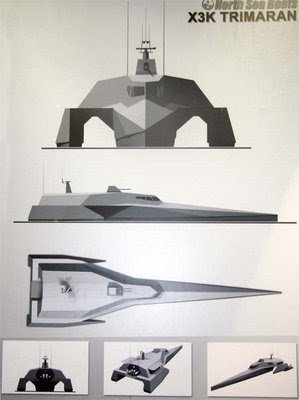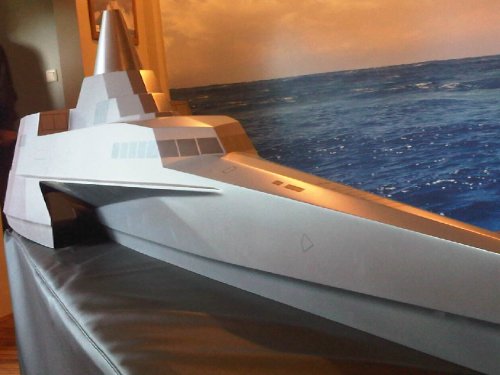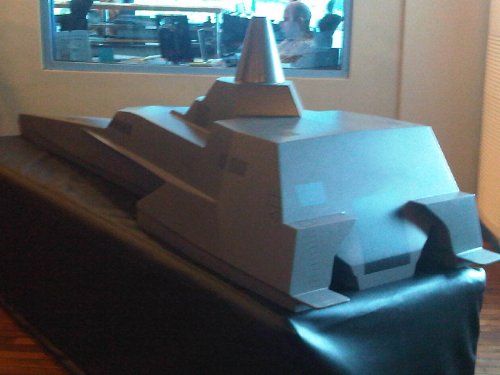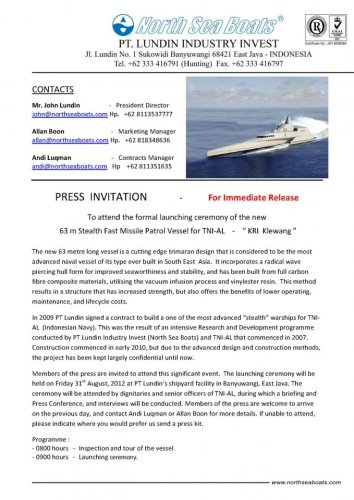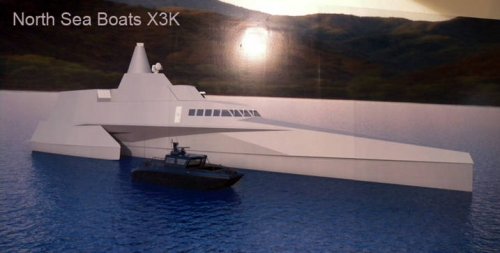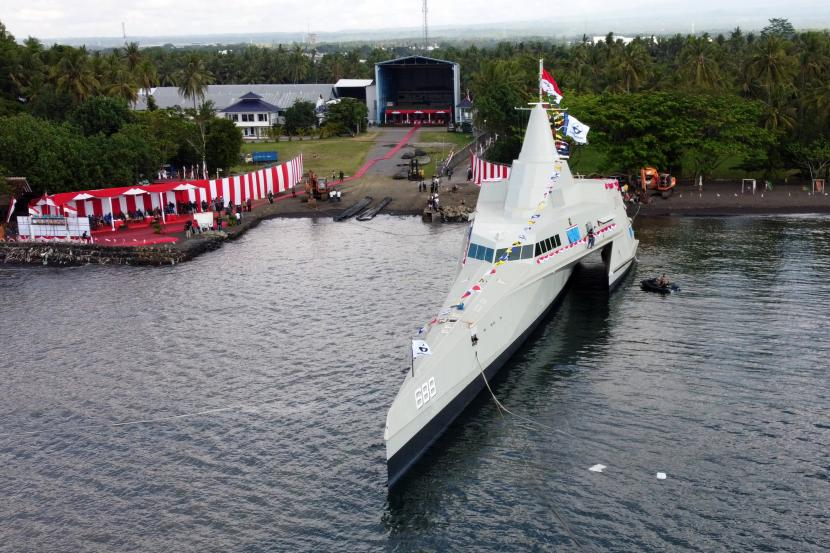Artist's impression of 63m Fast Trimaran Missile Boat manufactured by North Sea Boats (Indonesia). The Indonesian Navy has ordered four boats. Also known as the X3K class.
Source:
http://www.northseaboats.com/63m_fast_missile.htm#.UDusaaNp5ht
http://www.kaskus.co.id/showthread.php?p=589573832
http://stardefense.blogspot.com/2012/01/indonesia-bys-4-trimarans.html
http://mypariwisata-machineguns.blogspot.com/2011/12/trimaran-dogfight-ship-indonesian.html
Source:
http://www.northseaboats.com/63m_fast_missile.htm#.UDusaaNp5ht
http://www.kaskus.co.id/showthread.php?p=589573832
http://stardefense.blogspot.com/2012/01/indonesia-bys-4-trimarans.html
http://mypariwisata-machineguns.blogspot.com/2011/12/trimaran-dogfight-ship-indonesian.html
Attachments
-
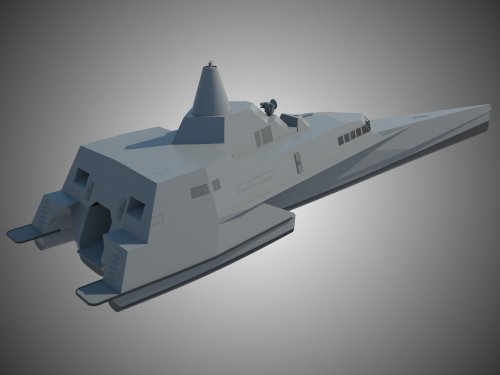 63m_fast_missile_3_b.jpg54.2 KB · Views: 654
63m_fast_missile_3_b.jpg54.2 KB · Views: 654 -
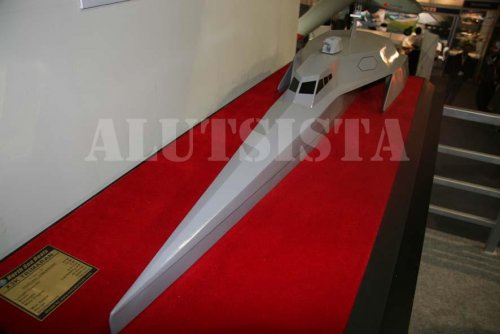 X3KTrimaran2.jpg38.7 KB · Views: 98
X3KTrimaran2.jpg38.7 KB · Views: 98 -
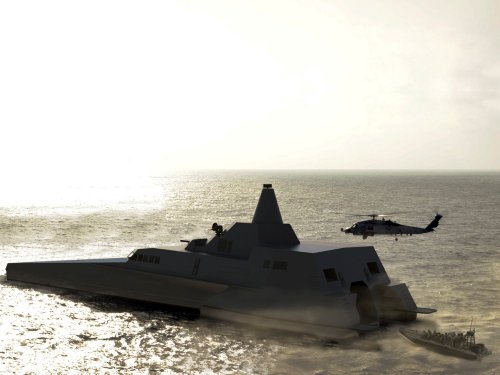 63m_fast_missile_2_b.jpg133.4 KB · Views: 123
63m_fast_missile_2_b.jpg133.4 KB · Views: 123 -
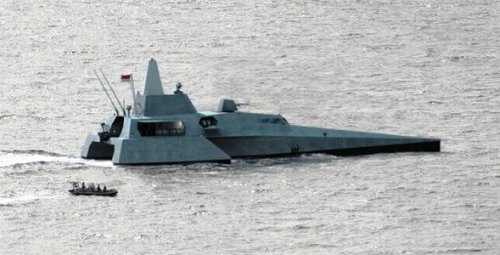 trimaran-x3k-di-indonesiaproud-wordpress-com.jpg61.3 KB · Views: 625
trimaran-x3k-di-indonesiaproud-wordpress-com.jpg61.3 KB · Views: 625 -
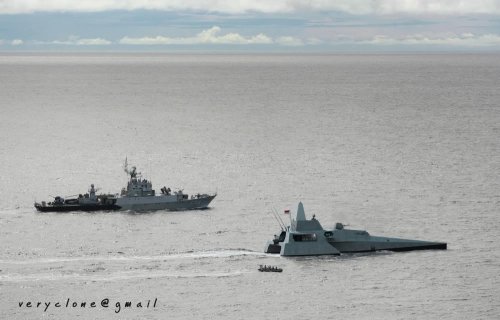 Trimaranx3ksea-trial1554156114.jpg107.8 KB · Views: 635
Trimaranx3ksea-trial1554156114.jpg107.8 KB · Views: 635 -
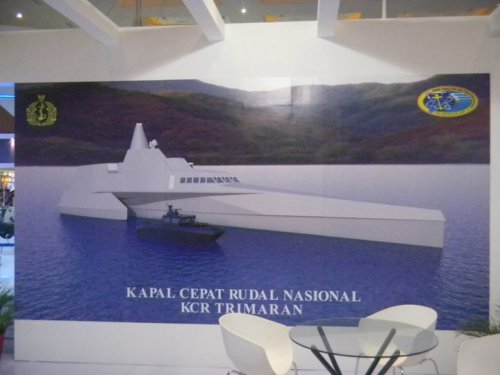 149985_1678966650935_1140589345_1835866_4655701_n.jpg56.2 KB · Views: 628
149985_1678966650935_1140589345_1835866_4655701_n.jpg56.2 KB · Views: 628 -
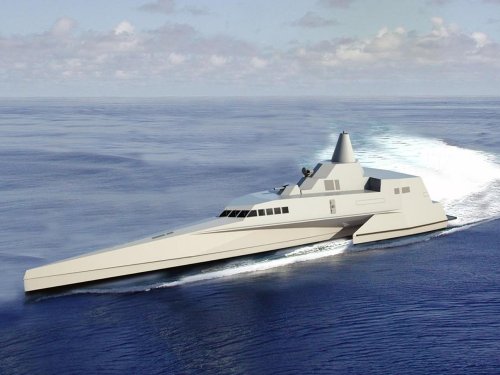 63m_fast_missile_1_b.jpg145.4 KB · Views: 657
63m_fast_missile_1_b.jpg145.4 KB · Views: 657

